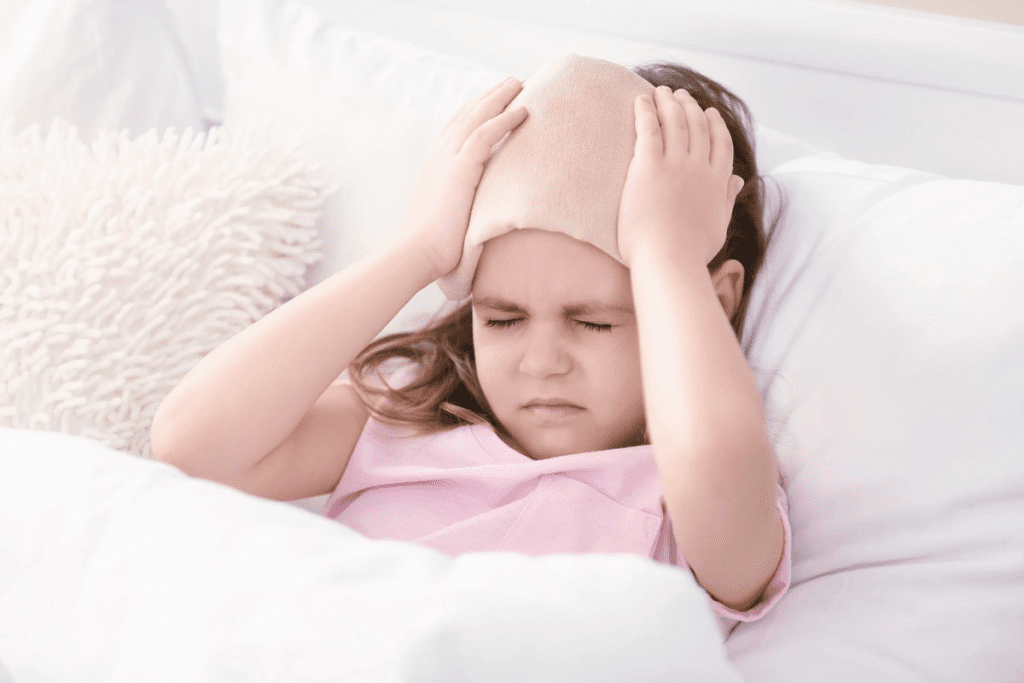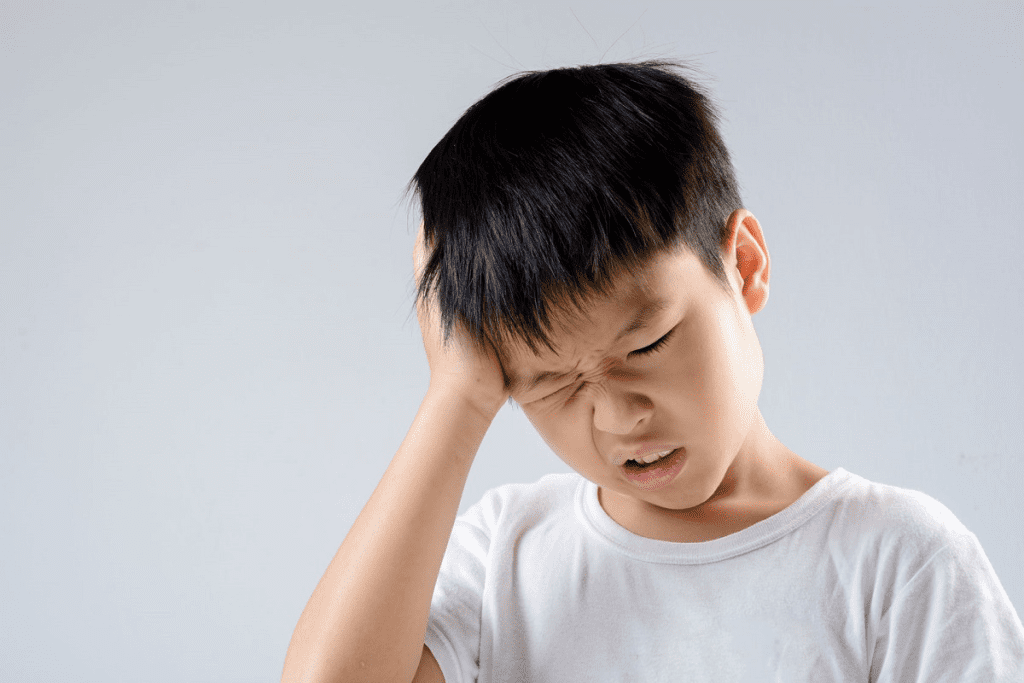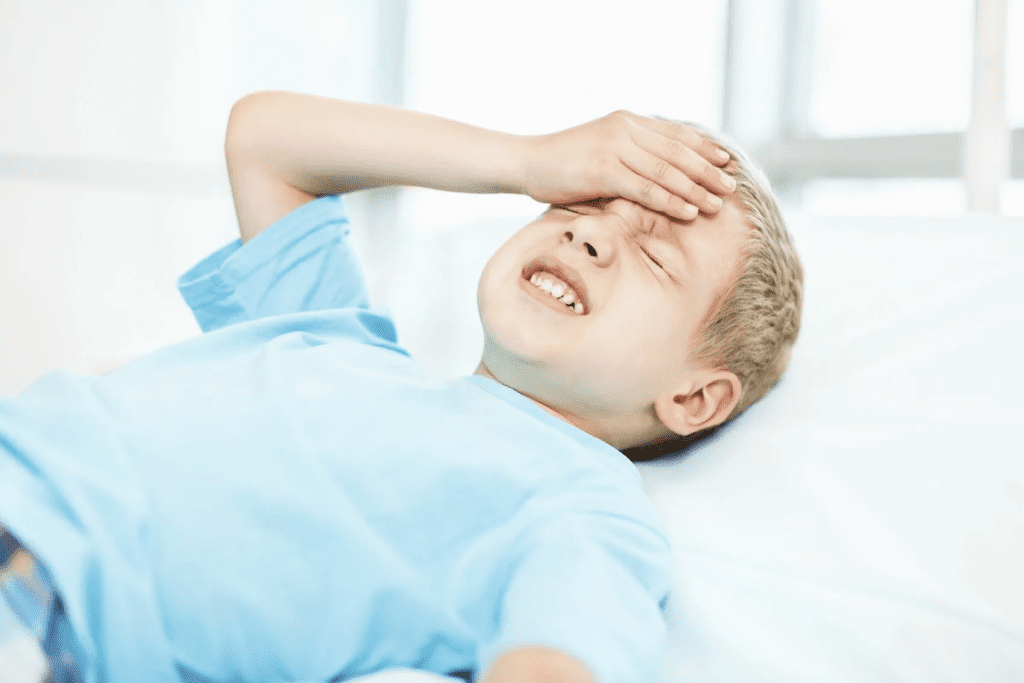Last Updated on November 14, 2025 by
High fever in children can worry parents a lot. Knowing when a child’s fever is too high is key to their health. It helps avoid unnecessary stress.
A child’s fever is a concern when their rectal temperature hits or goes over 100.4 °F (38 °C). This is true for babies under 3 months. For older kids, the danger zone changes with age. Medical guidelines say any fever over 102 degrees for more than 2 days needs a doctor’s visit.

It’s important to know when a fever is serious. Parents should watch their child’s temperature and overall health closely. This helps decide the right action to take.
Fever in children can worry parents, but knowing its role helps manage it. A fever is not an illness but a sign that the body is fighting an infection. It can be caused by many things, like the common cold, flu, ear infections, or UTIs.
Fever is a natural response to infection. When the body finds an infection, it raises its temperature. This makes it harder for the infection to grow, helping the body fight it off. Understanding this is key for parents to know how serious their child’s fever is.
The body has a system to keep its temperature at 98.6 °F (37 °C) normally. When infected, the body’s thermostat, the hypothalamus, makes the temperature rise. This is a defence mechanism. But, it’s important to watch the temperature to avoid it getting too high.
While fever is usually a normal response to infection, sometimes it’s a worry. Research shows a fever over 39 °C (102.2 °F) might mean a serious infection. Parents should watch for signs like extreme tiredness, severe headache, trouble breathing, or dehydration. Spotting these signs early is key to knowing when to get medical help.
In summary, knowing when a fever is dangerous involves understanding its role in fighting infection and how the body controls temperature. It’s also about knowing when it’s a worry, not just a normal response. By being informed, parents can handle their child’s fever better and know when to get medical help.
Fever is common in kids, but its impact changes with age. Knowing the fever danger zones for different ages helps parents know when to seek medical help.

Newborns and babies under 3 months need quick action if they have a fever. A temperature over 100.4 °F (38 °C) means it’s time to see a pediatrician. Their young immune system makes them very vulnerable.
Babies from 3 to 6 months should be watched closely if they have a fever. A fever of 101 °F (38.3 °C) is a worry. At this age, their immune system is just starting to grow.
Infants from 6 to 12 months face a higher risk if their fever goes over 103 °F (39.4 °C). Their immune system is getting stronger, but they’re more likely to get sick.
Children from 1 to 3 years old can have fevers from 102.2 °F to 104 °F (39 °C to 40 °C). Older kids need to be watched if their fever stays over 104 °F (40 °C). This could mean a more serious illness.
Parents should know these fever levels and get medical help if their child’s fever is too high. Early action can greatly improve many fever-related conditions.
Key Takeaways:
Keeping an eye on fever and knowing its risks by age helps parents make better health choices. Always talk to a doctor if you’re not sure about your child’s health.
When a child has a fever, it’s not just the temperature that’s a concern. The symptoms that come with it can show a serious issue. A fever is a normal response to infection, but some signs can mean a bigger problem that needs quick attention.
If your child is very tired or unresponsive with a 102 fever or higher, it’s a worry. This could mean a serious infection or another condition that needs a doctor’s check.
A child with a bad headache or stiff neck and a high fever might have meningitis. This is a serious condition. Seek medical help right away if you see these signs.
Having trouble breathing or breathing fast with a fever could mean pneumonia. Watch your child’s breathing closely. If it’s not normal, get medical help fast.
Fever can cause dehydration if not treated. Look for signs like a dry mouth, fewer wet diapers, or not peeing as often in older kids. Keeping your child hydrated is key, even more so with a 103 fever.
Other warning signs of a dangerous fever include:
If your child shows these fever symptoms even after their fever goes down, call your pediatrician. It’s always safer to be cautious with your child’s health.

Knowing these warning signs helps you make better choices for your child’s health. It ensures they get the care they need when they need it most.
Fever in children worries parents a lot. It’s key to know when to get medical help. Knowing serious signs helps you make smart health choices for your child.
Some cases need quick medical help. If your child shows these signs, get emergency care right away:
If your child is under 3 months and has a fever, or over 3 months with a fever over 104 °F (40 °C), call your pediatrician within 24 hours. Also, if the fever doesn’t go down with medicine, or if your child seems really upset, it’s best to talk to a pediatrician.
There are safe ways to manage your child’s fever at home:
LivHospital stresses the need for up-to-date care and teamwork in treating childhood illnesses, like fever. Being informed and ready helps parents care for their kids during fever episodes.
Parents often worry when their child gets a fever. But most fevers are mild and can be handled at home. Knowing that fevers help the body fight off sickness can ease worries.
Fevers in kids can come from infections or inflammation. It’s important to keep an eye on the temperature and look out for signs that need a doctor. Yet, many fevers are harmless and will go away with the right care.
Knowing when a fever is serious and what signs to watch for helps parents manage their child’s health. This knowledge can also cut down on doctor visits. It makes dealing with fevers easier for families.
A fever is when a child’s body temperature goes over 100.4 °F (38 °C). The exact temperature that’s considered a fever can change based on the child’s age.
For babies under 3 months, a fever is any temperature over 100.4 °F (38 °C). If this happens, you should get medical help right away.
The danger zone for a fever in kids depends on their age. But a fever over 104 °F (40 °C) is usually seen as dangerous. It might need close watching and possibly a doctor’s visit.
Signs of a dangerous fever include extreme tiredness, severe headaches, trouble breathing, and dehydration. These are serious and need attention.
Get medical help right away if your child is very upset, has a fever with other bad symptoms, or if their fever is too high for their age.
To manage a fever at home, use medicines like acetaminophen for kids over 3 months or ibuprofen for kids over 6 months. Dress them lightly and make sure they drink plenty of water.
The body has ways to keep its temperature normal. A fever means the body is fighting off an infection. But if the fever gets too high, it’s a worry.
Yes, a fever can mean a serious infection, especially if it’s accompanied by other bad symptoms. It’s important to watch your child closely and get medical help if needed.
Figuring out if a fever is from a virus or bacteria usually needs a doctor’s check-up. Symptoms can be similar, and some infections need special treatments.
National Institute for Health and Care Excellence (NICE). (2019). Fever in under 5s: Assessment and initial management. NICE Guideline [NG143]. Retrieved from https://www.nice.org.uk/guidance/ng143
CHOC Children’s. (2025, July 30). Fever chart guide: When to go to the ER. CHOC. https://health.choc.org/guide/fevers/KidsHealth. (2024, August 25). Fever symptoms and treatment (for parents). https://kidshealth.org/en/parents/fever.html
Subscribe to our e-newsletter to stay informed about the latest innovations in the world of health and exclusive offers!